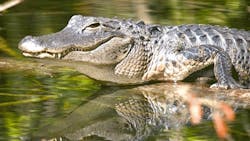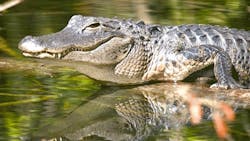“The way I keep alligators out of my yard,” she told us, “is I just stopped feeding the birds.”
We all asked how that could possibly help.
She continued: “When you feed the birds, they scatter the birdfeed all over and a lot of it drops on the ground. Then the field mice come in and eat the birdseed … then the snakes come in and eat the field mice … then the wild pigs come in and eat the snakes … finally, the alligators come in to eat the snakes and wild pigs.
“So just stop feeding the birds and the alligators will not come into your yard,” she concluded.
As a safety specialist, I can compare these alligators to workplace accidents. We all know that most accidents are caused by a chain of events, usually starting with something very minor that continues through the chain until it these somewhat minor things lead to the larger thing, i.e. the accident. So it usually is not just one thing that causes the accidents; it’s a chain of events. If we can break that chain of events, maybe we can prevent more accidents.
So think about the many little things that we look at when we are conducting our safety inspections that seem minor – such as the “birdseed” in this story – and then consider the accidents (alligators) on their way. Now, think ahead and consider how to prevent them from showing up.

